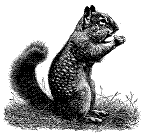Vertebrate Pest Conference Proceedings collection
Date of this Version
March 1986
Abstract
A combination Purivox® Double-John carousel propane exploder and CO2 pop-up scarecrow operated in synchrony was evaluated in five ripening sunflower fields in 1981 and 1982, respectively, near Devils Lake and Westhope, North Dakota. In each field, this treatment was evaluated in an alternating off-on sequence of 5-day intervals for a period of 20 days. In 1981, devices were deployed at one unit per 8 to 10 acres and in 1982 at one unit per 4 to 6 acres. The degree of effectiveness for reducing bird damage in three of five fields that met selection criteria ranged from 71 to 87% with a mean of 78%. During the first 10-day cycle, damage on these three fields was reduced 70, 89 and 95% or a mean of 84%, while in the second cycle damage was reduced an average of 59%. In the remaining two fields in which blackbirds were well established, damage was only reduced 8 and 31% during the entire test period. This was attributed to well-established feeding patterns in the fields by large flocks of blackbirds from a nearby roost. The cost to operate one unit on 6 acres of sunflower was $14 per acre if prorated over a 10-year period (the expected unit life). Bird damage must be 18% or higher before a grower could expect a return on money invested with this device. The cost-benefit ratio in this study was 1:2.3 because damage exceeded the 18% level. Although the cost-benefits of the combination scare device indicated that for most growers in North Dakota the cost of control would exceed the dollars saved, it would be most useful in about 1.2% of the fields which annually get more than 18% damage.

